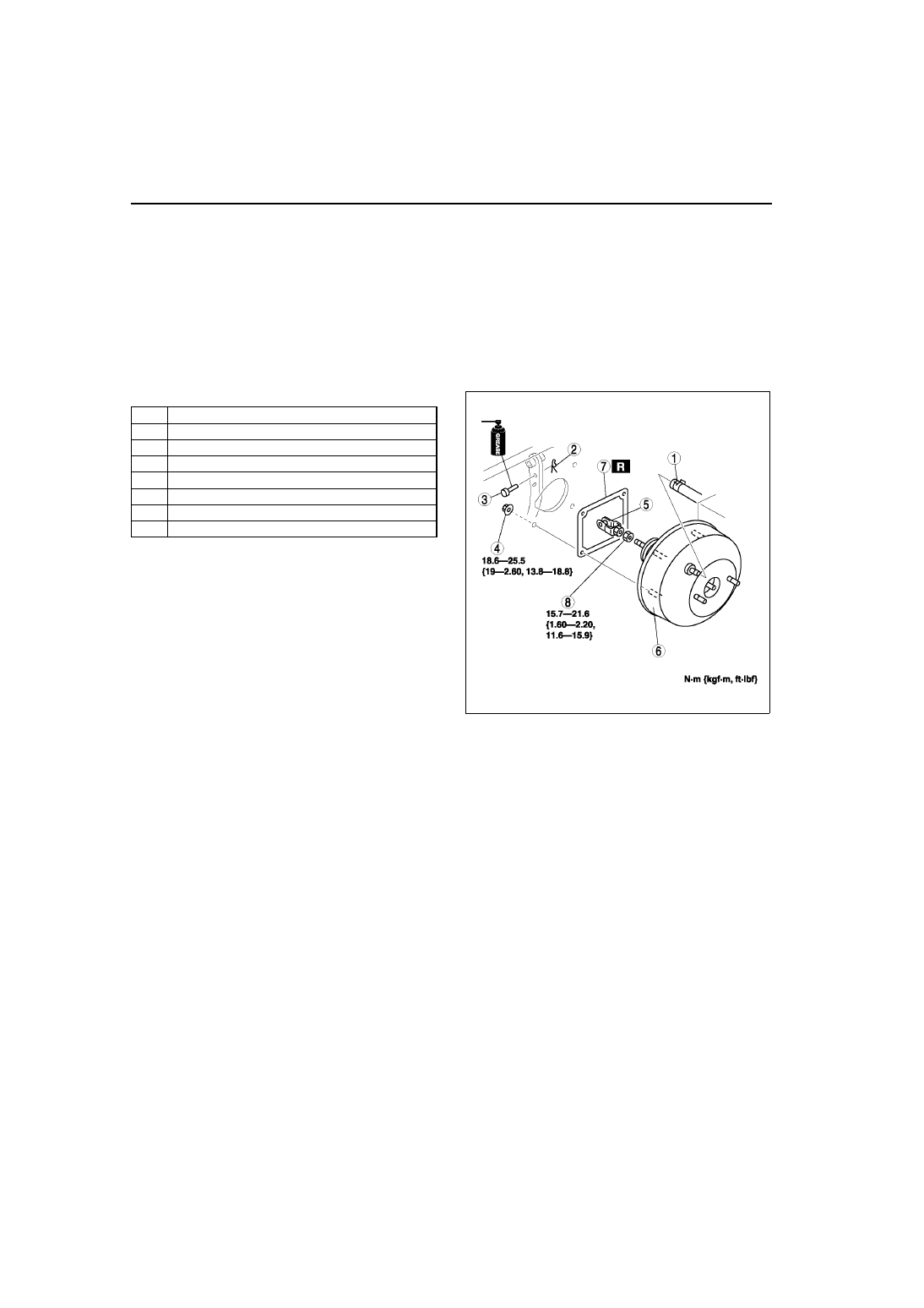Mazda 6. Manual - part 239

P–14
CONVENTIONAL BRAKE SYSTEM
POWER BRAKE UNIT REMOVAL/INSTALLATION
A6E691243800W02
1. Remove the master cylinder. (See
P–10 MASTER CYLINDER REMOVAL/INSTALLATION
2. Remove the wiper arm. (See
T–57 WINDSHIELD WIPER ARM AND BLADE REMOVAL/INSTALLATION
3. Remove the cowl grille. (See
S–50 COWL GRILLE REMOVAL/INSTALLATION
4. Remove the wiper motor. (See
T–56 WINDSHIELD WIPER MOTOR REMOVAL/INSTALLATION
.)
5. Remove the cowl panel. (See
S–119 COWL PANEL REMOVAL/INSTALLATION
6. For L.H.D., remove the A/C bracket.
7. For L.H.D., remove the ABS/TCS HU/CM or DSC HU/CM . (See
P–28 ABS (ABS/TCS) HU/CM REMOVAL/
.) (See
P–38 DSC HU/CM REMOVAL/INSTALLATION
8. For R.H.D., remove the alternator cover.
9. For R.H.D., remove the insulator.
10. For R.H.D., remove the vacuum pipe bracket.
11. Remove in the order indicated in the table.
12. Install in the reverse order of removal.
End Of Sie
POWER BRAKE UNIT INSPECTION
A6E691243800W01
Warning
• The following inspection methods are the simple inspection methods to judge the function of
power brake.
• If there is malfunction in power brake unit, replace the power brake unit as a component.
Power Brake Unit Function Check (Simple Method)
Step 1
1. With the engine stopped, depress the pedal a few times.
2. With the pedal depressed, start the engine.
3. If the pedal moves down slightly immediately after the engine starts, the unit is operating.
Step 2
1. Start the engine.
2. Stop the engine after it has run for 1 or 2 minutes.
3. Depress the pedal with the usual force.
4. If the first pedal stroke is long and becomes shorter with subsequent strokes, the unit is operating.
• If a problem is found, inspect for damage of the vacuum hose, and vacuum tank. Repair if necessary, and
inspect it again.
Step 3
1. Start the engine.
2. Depress the pedal with usual force.
3. If the pedal height does not change, the unit is operating.
4. Hold the pedal down for about 30 seconds.
5. If the pedal height does not change, the unit is operating.
1
Vacuum hose
2
Snap pin
3
Clevis pin
4
Nut
5
Fork
6
Power brake unit
7
Gasket
8
Nut
A6E6912W044